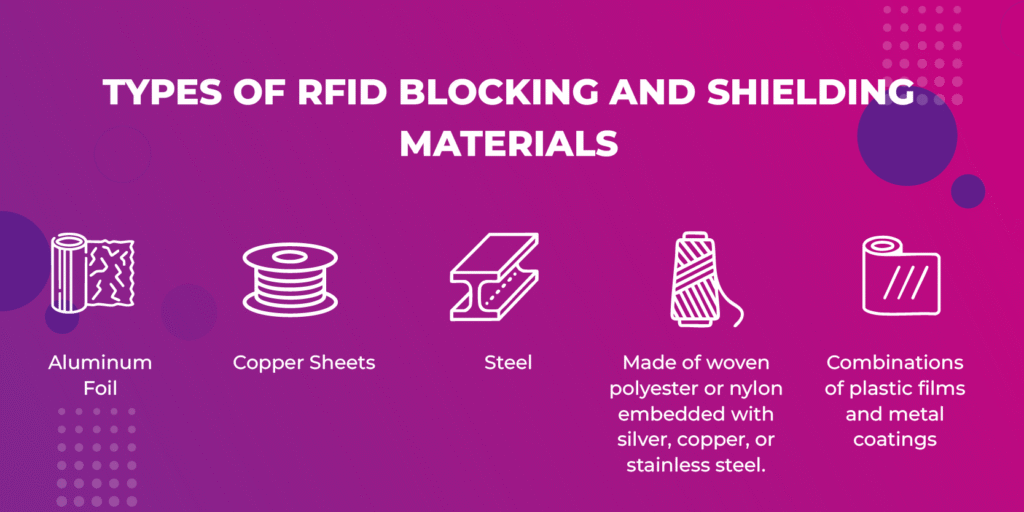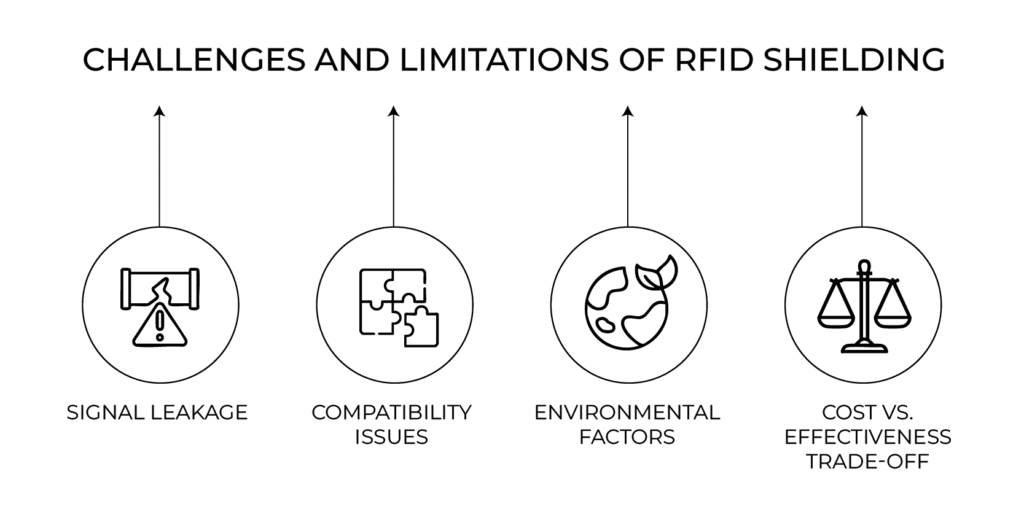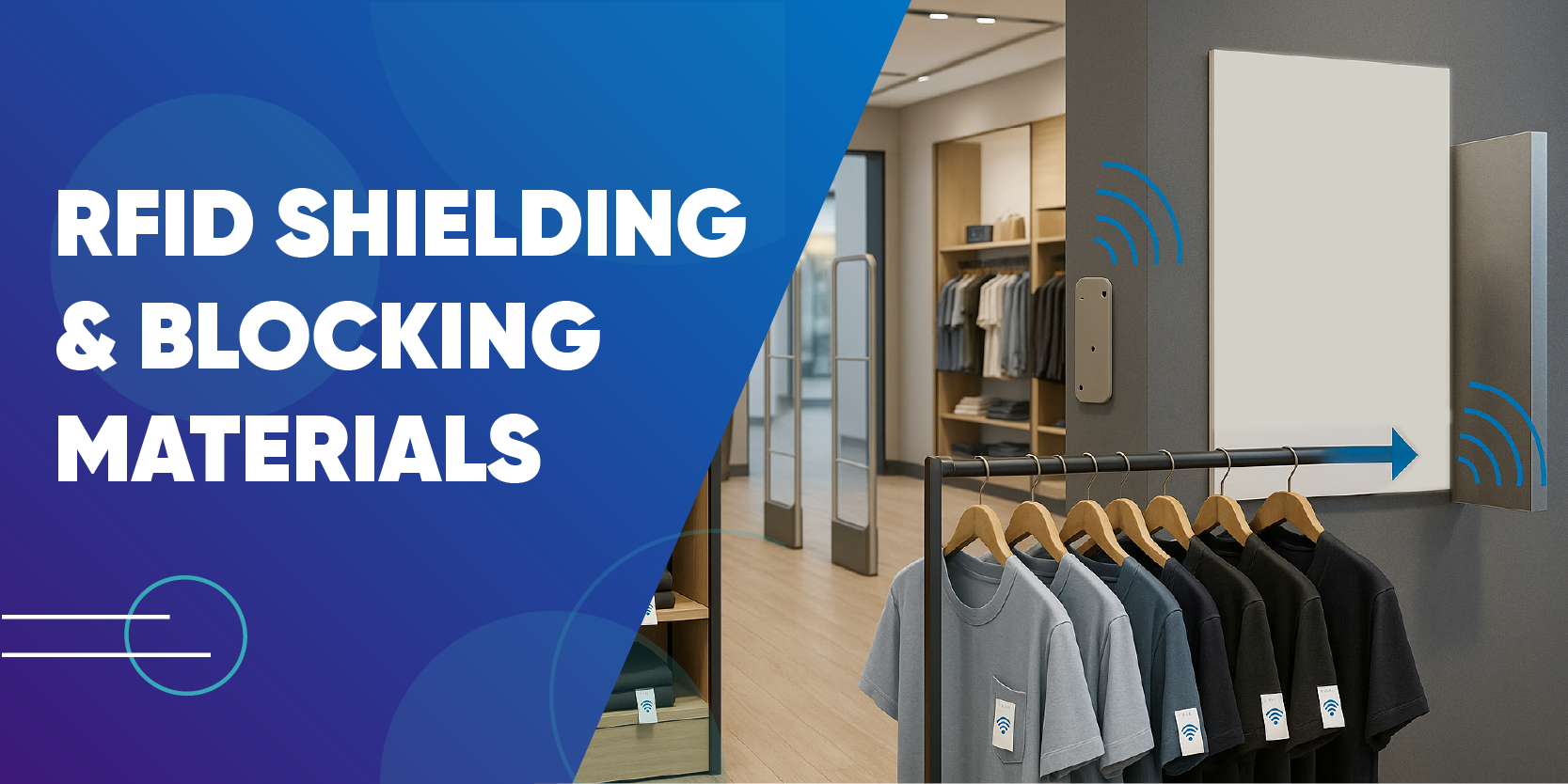Radio Frequency Identification (RFID) is a widely used technology for asset tracking, inventory management, supply chain automation, and personal identification. However, as RFID systems become more prevalent, concerns about privacy, security, and electromagnetic interference (EMI) have prompted the need for RFID shielding and blocking solutions. This article provides a comprehensive exploration of RFID shielding and blocking materials, their applications, effectiveness, and selection criteria.
Understanding RFID Technology
RFID (Radio-Frequency Identification) technology uses radio waves to automatically identify and track objects. It involves tags, which contain information, and readers that emit radio waves to activate the tags and receive their data. This process allows for wireless communication and data transmission without the need for line of sight or physical contact.
RFID systems consist of three primary components:
- RFID Tags (Transponders): Embedded with a microchip and antenna.
- RFID Readers (Interrogators): Emit radio signals to activate tags and receive data.
- RFID Antenna: Facilitates communication between the RFID reader and tags.
RFID tags can be passive, active, or semi-passive, and they operate across various frequency ranges:
- Ultra-High Frequency (UHF): 860-960 MHz The transmission of data via radio waves makes RFID susceptible to unwanted reading, interference, and data theft, which is where shielding and blocking materials come into play.
What is RFID shielding?
RFID shielding, also known as RFID blocking, refers to the process of preventing unauthorized access to information stored on RFID tags. It involves creating a protective shield, often using materials that block radio waves, to prevent skimming devices from reading data from these tags.
RFID shielding refers to the use of materials or technologies to prevent RFID readers from communicating with RFID tags. This can be essential for:
- Data Security: Preventing unauthorized scans.
- Interference Control: Reducing cross-talk between systems.
- Controlled Read Zones: Enhancing read accuracy in complex environments.
Types of RFID Blocking and Shielding Materials

Several materials are used for RFID shielding. Each has unique electromagnetic shielding properties, cost implications, and practical applications.
Metal Foils and Sheets
- Aluminum Foil: Cheap and effective for blocking HF and UHF signals.
- Copper Sheets: High conductivity and better EMI shielding performance.
- Steel: Durable but heavier and less effective than copper or aluminum.
Applications: RFID shielding enclosures and custom enclosures.
Conductive Fabrics
A conductive textile is a fabric which can conduct electricity. Conductive textiles known as lamé are made with guipé thread or yarn that is conductive because it is composed of metallic fibers wrapped around a non-metallic core or has a metallic coating.
- Made of woven polyester or nylon embedded with silver, copper, or stainless steel fibers.
- Flexible, lightweight, and ideal for portable RFID shielding.
Applications: RFID-blocking clothing, bags, tents, and portable pouches.
Metalized Films and Laminates
- Combinations of plastic films and metal coatings.
- Offer a balance between flexibility, lightweight construction, and shielding.
Applications: Credit card sleeves, secure packaging, anti-theft retail tags.
Carbon-Loaded Plastics
- Plastics embedded with carbon powder or fibers.
- Provide moderate shielding with enhanced structural integrity.
Applications: Enclosures, industrial RFID shielding, and housings.
Farraday Cages and Enclosures
- Complete shielding using conductive enclosures.
- Block all incoming and outgoing RFID signals.
Applications: Secure RFID labs, testing environments, military-grade storage.
How RFID Shielding Works
RFID blocking technology works by creating a shield that prevents unauthorized access to the information stored on RFID-enabled devices, like retail store checkout counters and other read zones. This shield, often made of materials like aluminum or carbon fiber, blocks the radio waves used by RFID readers to communicate with the tags, thereby preventing skimming attacks.
RFID shielding works by creating a barrier that absorbs, reflects, or redirects electromagnetic signals.
- Absorption: Materials absorb and dissipate electromagnetic energy.
- Reflection: High-conductivity materials reflect signals away.
- Redirection: Signals are diffused or redirected to prevent them from reaching the tag.
Effective shielding depends on factors such as material conductivity, thickness, grounding, and frequency range.
Shielding Effectiveness by Frequency
Different materials perform differently across RFID frequency bands:
| Material | LF Shielding | HF Shielding | UHF Shielding |
|---|---|---|---|
| Aluminum Foil | Moderate | Good | Excellent |
| Copper Sheet | Good | Excellent | Excellent |
| Steel Plate | Good | Moderate | Moderate |
| Conductive Fabric | Moderate | Good | Good |
| Carbon-loaded Plastic | Poor | Moderate | Moderate |
Common Applications of RFID Shielding Materials
Industrial and Commercial Use
- Shielded storage containers to prevent tag reads outside controlled areas.
- Enclosures in warehouses and manufacturing units.
Military and Government
- Secure storage and transport of classified RFID-tagged items.
- Compliance with electromagnetic security regulations.
Testing and Calibration
- Farraday cages and shielded test chambers for performance testing of RFID devices.
Selecting the Right Shielding Material
The most effective shielding material depends on the type of radiation being blocked. For gamma rays and X-rays, lead is highly effective due to its high density and atomic number, which absorb and attenuate radiation. For neutron radiation, materials rich in hydrogen, like water, polyethylene, or high-density concrete, are better choices. Environmental factors, such as heat resistance and structural load, should also be considered
When choosing an RFID shielding or blocking material, consider the following factors:
- Frequency of Operation: Ensure compatibility with the RFID frequency in use.
- Shielding Effectiveness: Choose a material based on the required level of attenuation.
- Durability: Consider environmental exposure, mechanical strength, and longevity.
- Flexibility and Weight: For portable or wearable applications, lightweight and flexible materials are preferable.
- Cost: Balance between performance and budget.
DIY RFID Shielding Tips
For small-scale or personal use, some DIY solutions are feasible:
- Wrap cards or tags in aluminum foil.
- Create pouches using conductive fabric.
- Use metal tins or boxes for tag storage.
While not as effective as commercial solutions, these can offer basic protection.
Challenges and Limitations OF RFID Shielding

- Signal Leakage: Imperfect shielding can allow signal seepage.
- Compatibility Issues: Over-shielding may prevent intended RFID functions.
- Environmental Factors: Heat, humidity, and corrosion can degrade shielding materials, compromising their effectiveness.
- Cost vs. Effectiveness Trade-off: High-performance materials may be cost-prohibitive.
Future of RFID Shielding Materials
Advancements in material science are driving innovation in RFID shielding. Future trends include:
- Graphene-Based Shielding: Promises ultra-thin, lightweight, and highly conductive barriers.
- Nano-Coatings: Offers high shielding effectiveness with minimal bulk.
- Multifunctional Fabrics: Combining shielding with other properties like flame resistance and waterproofing.
Conclusion
RFID shielding and blocking materials play a critical role in ensuring security, operational accuracy, and electromagnetic compliance in RFID systems. With a wide range of materials available, selecting the right one involves understanding the specific use case, frequency range, and required level of protection. As RFID continues to evolve, so will the technologies that protect it, offering more efficient, durable, and versatile shielding solutions.
Whether you are securing your personal information or designing a large-scale industrial RFID system, understanding shielding materials is essential for building secure and reliable RFID environments.
